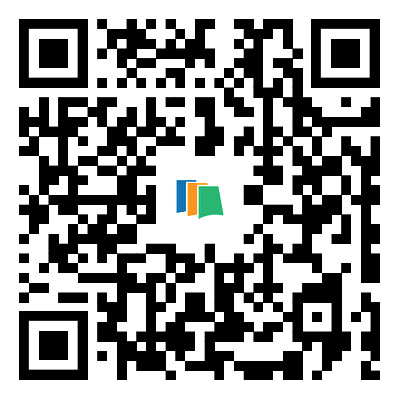Achieving Multi-functionality in a Multi-functional Box Former
2025-07-02
A Multi-functional Box Former is a vital machine in the packaging industry, designed to form various types of boxes efficiently. It automates the process of shaping corrugated sheets into boxes of different sizes and configurations. The concept of multi-functionality refers to the machine’s ability to handle multiple tasks with ease, enhancing versatility, reducing space requirements, and improving productivity. Achieving multi-functionality in a Box Former is essential to keep up with modern packaging demands. Below are the key strategies to integrate multiple functions into a Box Former.
1. Modular Design Approach
One of the most effective ways to achieve multi-functionality is through a modular design. By using interchangeable components and modules, a box former can be easily reconfigured for different tasks. For example, it can include different sets of forming dies to produce various box styles (e.g., regular slotted cartons, half-slotted cartons, and telescope boxes). A modular system allows for quick adaptation to various production needs without the need for a complete machine overhaul.
The modularity also extends to features such as adjustable folding mechanisms and variable pressure settings, allowing the user to adapt the machine for different materials and box sizes. With the ability to customize each component, the machine becomes capable of performing a broader range of functions.
2. Integration of Multiple Functions
For a Box Former to be truly multifunctional, multiple processes need to be integrated into one machine. Instead of having separate machines for tasks such as cutting, folding, gluing, and sealing, the multi-functional box former can integrate all of these tasks into one seamless operation.
For instance, the machine can be equipped with:
Cutting stations that adjust automatically for different box sizes.
Folding stations that bend the corrugated board accurately without causing damage.
Gluing stations that apply adhesive to the right spots and ensure proper sealing.
Sealing stations that apply pressure to ensure the box is securely formed.
This integration of various functions reduces operational costs, decreases downtime, and ensures consistency in the final product.
3. Automation and Computerized Control
To achieve true multi-functionality, automation plays a pivotal role. Advanced PLC (Programmable Logic Controller) systems and HMI (Human Machine Interface) controls allow operators to program different tasks and adjust machine settings with ease. With computerized control, the machine can seamlessly switch between different functions based on preset parameters, like box size, style, and material type.
Automation not only streamlines the operation but also improves efficiency and reduces human error. With sensors and automated adjustments, the machine can detect discrepancies in the corrugated board or adhesive application, automatically correcting any issues without stopping the entire process.
4. Versatility in Material Handling
Incorporating material versatility is another important feature of multi-functional box formers. The ability to work with a variety of materials, including different grades of corrugated board, paperboard, and even eco-friendly alternatives, greatly expands the machine’s capabilities. This can be achieved by:
Adjustable rollers and feed mechanisms that accommodate different material thicknesses.
Variable cutting and scoring capabilities to work with a range of board types.
Being adaptable to various materials not only enhances the machine's functionality but also allows the user to cater to different market needs, including eco-conscious consumers.
5. Customizable Box Sizes and Styles
Multi-functional box formers should be able to handle a wide range of box sizes and styles. The key to achieving this is by incorporating adjustable forming systems that can easily switch between sizes without requiring major adjustments. This can be achieved through:
Adjustable dies and molds that accommodate different box shapes.
Dynamic folding and cutting systems that can change dimensions in real-time.
Furthermore, the machine can be designed to produce specialized box types such as custom-designed boxes, stackable boxes, and nested boxes, enhancing the product’s appeal to different sectors of the packaging industry.

6. High-Speed Operation with Precision
Multi-functional box formers must be capable of operating at high speeds without sacrificing precision. This requires advanced engineering in the machine’s drivetrain system and motion control. High-speed motors and servo drives allow the machine to handle fast production rates, while precise control mechanisms ensure accurate cutting, folding, and sealing.
The balance between speed and accuracy ensures that the machine delivers high-volume production without compromising on the quality or integrity of the boxes. This is especially important when working with a variety of box sizes and materials, where tight tolerances are required.
7. Energy Efficiency
Incorporating energy-efficient features is another important consideration for multi-functionality. A machine that can handle various tasks while consuming less power provides cost savings and reduces environmental impact. This can be achieved through:
Energy-efficient motors that adjust power consumption based on load requirements.
Power-saving modes that reduce consumption during idle times.
Regenerative braking systems that capture and reuse energy in certain operations.
These features contribute to a more sustainable and cost-effective production process, making the multi-functional box former an environmentally friendly choice for modern manufacturing.
Conclusion
The multi-functional box former represents a significant leap forward in packaging technology. By integrating modular design, automation, versatility in material handling, customizable box sizes, and energy-efficient systems, manufacturers can achieve greater productivity, flexibility, and sustainability. The ability to perform multiple tasks in one machine not only saves space and reduces costs but also enhances the overall efficiency of the packaging line. As industries continue to demand faster, more adaptable, and cost-effective solutions, the multi-functional box former will remain a key player in modern packaging operations.
As a professional manufacturer and supplier, we provide high-quality products. If you are interested in our products or have any questions, please feel free to contact us.


